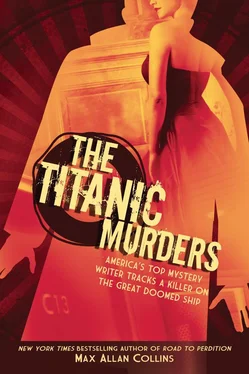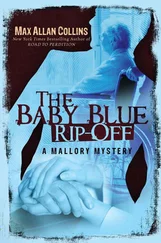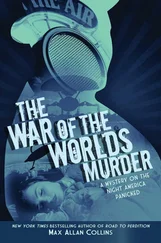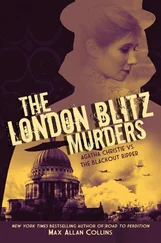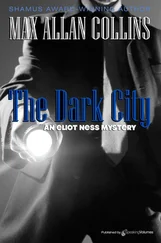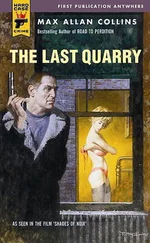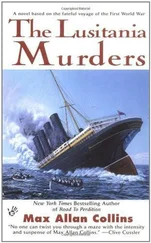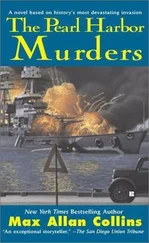Max Collins - The Titanic Murders
Здесь есть возможность читать онлайн «Max Collins - The Titanic Murders» весь текст электронной книги совершенно бесплатно (целиком полную версию без сокращений). В некоторых случаях можно слушать аудио, скачать через торрент в формате fb2 и присутствует краткое содержание. Жанр: Исторический детектив, на английском языке. Описание произведения, (предисловие) а так же отзывы посетителей доступны на портале библиотеки ЛибКат.
- Название:The Titanic Murders
- Автор:
- Жанр:
- Год:неизвестен
- ISBN:нет данных
- Рейтинг книги:5 / 5. Голосов: 1
-
Избранное:Добавить в избранное
- Отзывы:
-
Ваша оценка:
- 100
- 1
- 2
- 3
- 4
- 5
The Titanic Murders: краткое содержание, описание и аннотация
Предлагаем к чтению аннотацию, описание, краткое содержание или предисловие (зависит от того, что написал сам автор книги «The Titanic Murders»). Если вы не нашли необходимую информацию о книге — напишите в комментариях, мы постараемся отыскать её.
The Titanic Murders — читать онлайн бесплатно полную книгу (весь текст) целиком
Ниже представлен текст книги, разбитый по страницам. Система сохранения места последней прочитанной страницы, позволяет с удобством читать онлайн бесплатно книгу «The Titanic Murders», без необходимости каждый раз заново искать на чём Вы остановились. Поставьте закладку, и сможете в любой момент перейти на страницу, на которой закончили чтение.
Интервал:
Закладка:
William T. Stead was also seen in the Smoking Room, seemingly absorbed in the book he was reading, unconcerned about the brouhaha (he had taken a break from his book and was one of the few on deck at the time of the collision with the iceberg). He continued this until near the end, when he was spotted standing calmly at the rail. He had never mentioned to his fellow passengers that he had premonitions of drowning, and that he had-like Morgan Robertson, the author of Futility -written a story about an ocean liner striking an iceberg, with lives lost because too few lifeboats had been aboard.
“This is exactly what might take place,” he had predicted in 1886, “and what will take place, if liners are sent to sea short of boats.”
His body was not recovered.
Third-Class passenger Alfred Davies lost his life in the disaster; so did his uncle and two brothers. Their father described them, at the memorial service, as “fine big lads” and “the best of sons.”
In lifeboat number six, Maggie Brown, by standing up to an obnoxious crew member who’d taken charge, found her place in history as the “Unsinkable Mrs. Brown.” Never reconciling with her husband, over whose money she and her children battled for years, Maggie reveled in her celebrity until her death by a stroke in 1932. A Broadway musical loosely based on her life spawned a 1964 MGM motion picture starring Debbie Reynolds, who looked not much like Maggie (who somehow, after her death, became “Molly”); but then neither had Maggie wielded a handgun on a White Star lifeboat.
First-Class passengers Emil Brandeis and John Baumann were lost in the sinking; the body of the former was recovered, the latter’s was not.
J. Bruce Ismay worked bravely and hard, seeing that women and children were shuttled onto lifeboats; but he carved himself a place in history as a coward by stepping into one of the last lifeboats, collapsible C, and choosing not to go down with his ship-not even watching the great ship slip under, turning his back to the sight, much as the world would turn its back to him. By June 1913, he had “retired” from White Star, and was vilified throughout the remainder of a life that has been described as reclusive; his wife said the Titanic “ruined” him. Ismay’s charitable acts-and there were a number of these-included establishing a fund to benefit the widows of lost seamen. He died in 1937.
Charles Lightoller performed professionally, even heroically, going down with the ship, but swimming to capsized collapsible B, and scrambling on top. He was a company man at the two official inquiries, protecting both the late Smith and the very much alive Ismay; but nonetheless fell prey to the White Star Line’s unofficial policy of sabotaging the careers of surviving Titanic officers. He did become a commander in the Royal Navy during World War I, and provided heroic volunteer duty at Dunkirk in World War II. He died in 1952, not living to see himself portrayed as the hero of the film of Walter Lord’s epic version of the Titanic ’s story, A Night to Remember.
Lightoller was the one who allowed Michel Navatril, a.k.a. Louis Hoffman, to place his sons Lolo and Momon on collapsible D, the final lifeboat launched. Michel Jr. (Lolo was the boy’s nickname) recalled his father’s final words to him: “My child, when your mother comes for you, as she surely will, tell her that I loved her dearly and still do. Tell her I expected her to follow us, so that we might all live happily together in the peace and freedom of the New World.”
Navatril’s body was recovered; he had a revolver in his pocket.
The two boys-briefly celebrities as the unidentified “ Titanic orphans”-were returned to their mother in France. Edmond Navatril (Momon had been his nickname as a child) fought with the French army in World War II, escaping from a prisoner-of-war camp; however, due to health problems suffered during his captivity, he died at age forty-three. Michel Jr., who became a professor of psychology, lives in France.
Bertha Lehmann, the Swiss girl who was the only person Navatril ever trusted to take charge of his sons out of his own sight, boarded the same lifeboat as the Navatril boys. She lived in Minnesota and Iowa and raised a number of children; she died in December 1967.
John Jacob Astor IV guided his wife Madeline into lifeboat number four, but Lightoller refused Astor’s request to accompany and protect his wife, who was after all in a “delicate condition.” Lightoller firmly refused and Astor accepted this judgment, but did ask the number of the boat, whether to locate his wife later, or to register a complaint against Lightoller, will never be known.
Astor then assumed a casual, confident manner, lighting up a cigarette, tossing his gloves to his wife and assuring her that the sea was calm; saying, “You’ll be all right. You’re in good hands,” adding that he would see her in the morning. He stepped away and receded onto the boat deck.
When older boys were being turned away by Lightoller from lifeboats as “men,” Astor impulsively grabbed a girl’s large hat off a nearby head and shoved it onto a boy’s, saying, “Well now he’s a girl,” gaining ten-year-old William Carter a seat and his life. One of his last acts, apparently, was to go to the kennels and let out all of the dogs there, including the Astors’ Airedale Kitty, whom Madeline Astor claimed to have seen, from her lifeboat, running about the boat deck as the ship was sinking.
Astor was seen at the railing with Archie Butt and others, but did not drown; his crushed, soot-covered remains, recovered, indicated he’d apparently been killed by the falling forward funnel. In the pockets of his blue serge suit were $2,400 in American money and smaller amounts in French and English currency.
Madeline Astor was granted the income of a five-million-dollar trust and various mansions, as long as she did not remarry; but she married again, anyway, having two more sons by elderly stockholder William Dick, and married yet again-after a divorce-in 1933, to an Italian prizefighter, divorcing him five years later, also. Presumably her son John Jacob V, who had his own five-million-dollar trust fund, saw to it his mother didn’t starve. She died in 1940, in Palm Beach, Florida-a suicide, according to some sources-rarely speaking of the tragedy, and younger than her husband had been when he died.
Henry B. Harris, ushering his wife Rene to where Lightoller was restricting seating on the collapsible D, was told his wife could come aboard, but that he could not. He said softly, “I know-I’ll stay,” bade her farewell, and stepped back into the crowd.
Rene sued White Star for a million dollars, receiving only $50,000 (the standard payoff for a First-Class death aboard the Titanic -steerage was a thousand dollars). Plucky as always, she bucked the standard sentiment that a woman could not be a theatrical producer, and had a long and prosperous run doing just that; for years she had hit plays running in her own theaters, living a life strewn with yachts, Central Park penthouses, various homes and various husbands (though always using only “Harris” as her surname). The stock-market crash of ’29 sank her finances, but not her spirits; when she died, penniless, in a one-room apartment in a welfare hotel, at age ninety-three in 1969, she was still (in the words of Walter Lord) “radiantly blissful.”
Wallace Hartley and his orchestra-the full eight members playing together for the first time on the deck of the sinking ship-performed until the ship went down. Some say the impromptu concert ended around half an hour before the final plunge; even if this is so, their cheery on-deck ragtime is an enduring legend, and fact, of the tragedy. Despite adamant opinions to the contrary, their last number probably was “Nearer My God to Thee.”
Читать дальшеИнтервал:
Закладка:
Похожие книги на «The Titanic Murders»
Представляем Вашему вниманию похожие книги на «The Titanic Murders» списком для выбора. Мы отобрали схожую по названию и смыслу литературу в надежде предоставить читателям больше вариантов отыскать новые, интересные, ещё непрочитанные произведения.
Обсуждение, отзывы о книге «The Titanic Murders» и просто собственные мнения читателей. Оставьте ваши комментарии, напишите, что Вы думаете о произведении, его смысле или главных героях. Укажите что конкретно понравилось, а что нет, и почему Вы так считаете.
